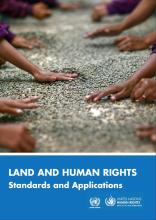/ library resources
Showing items 1 through 9 of 9.Why this study?
Recent years have witnessed an increase in violent conflicts involving pastoralists in parts of West Africa and the Sahel. They often take the form of clashes between herders and farmers, impacting human, national and regional security.
Sub-Saharan Africa has always been perceived as a land-abundant continent. Deininger & Byerlee (2011) estimate that the continent has the largest area of potentially available uncultivated land.
The Department of Mineral Resources is attempting to develop oil and gas drilling in South Africa through Operation Phakisa. The project is still in the early stages of research and exploration, but the Department aims to have 30 wells built in 10 years.
In South Africa, policies of separate development and restrictions placed on capital expenditure imposed on the lands occupied by the indigenous people during the colonial era prevented the state from implementing the cadastre in the communal areas of the country.
Land registration and titling in Africa has been seen as a means of legal empowerment of the poor that can protect smallholders’ and pastoralists’ rights of access to land and other landbased resources.
These principles provide guidance on ways to align business objectives with the safeguard of human rights.
The United Nations Declaration on the Rights of Indigenous Peoples (UNDRIP) is the most comprehensive international instrument on the rights of indigenous peoples.
This basic legal reference publication has been prepared as part of the OHCHR output on land and human rights.
Land Library Search
Through our robust search engine, you can search for any item of the over 73,000 highly curated resources in the Land Library.
If you would like to find an overview of what is possible, feel free to peruse the Search Guide.








